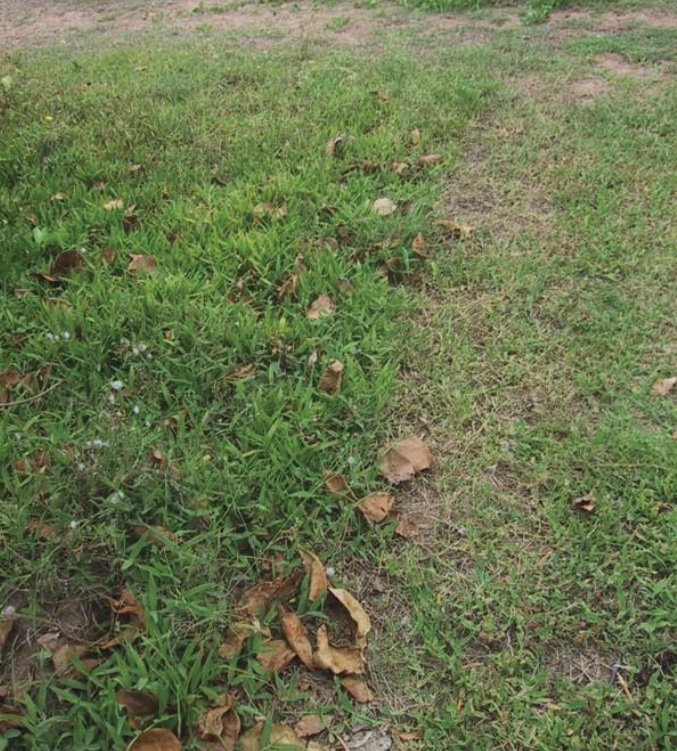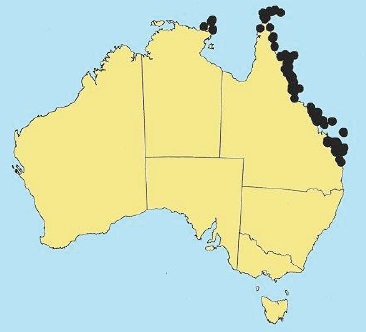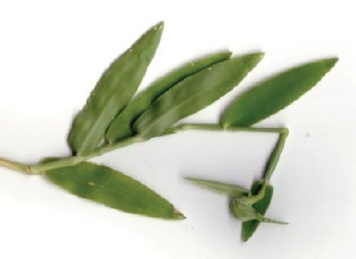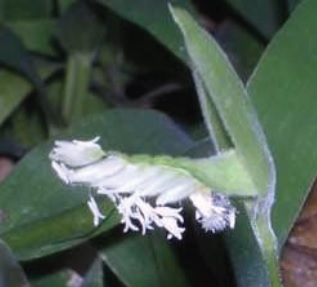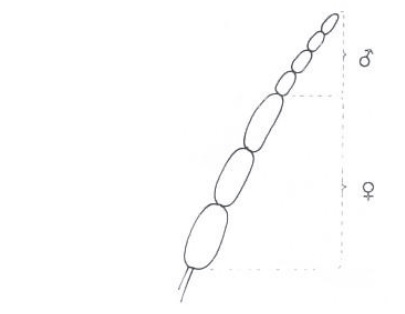Tropical Beachgrass, Bird’s Beak Grass – Thuarea involuta
Name
Thuarea is named after French botanist and ship’s officer Aubert du Petit-Thouars (1756–1831); involuta from the Latin involvo (inroll), referring to the in-rolled leaf blades.
Description
Thuarea involuta is a mat-forming, perennial grass with velvety-soft leaves. This prostrate grass is 2.5–25 cm tall. The inflorescence is a one-sided raceme, 1–3 cm long, with 1 to 2 female flowers at the base and four to six male flowers at the apex.
The short flowering shoots bend down as the seed ripens, and the capsules (formed by the spathe in a water-tight fold) either become buried in the sand or float away in the sea.
Distribution and Habitat
This grass is native to Australia, Asia and Africa. It is restricted to sandy coastal areas and is usually found on sandy foredunes.
Ecological Notes
It is an efficient sand binder and forms deep roots and can grow in shaded areas. It has been planted at Saunders Beach for dune stabilisation.
Propagation
This grass has been propagated vegetatively by planting sprigs.
References
- Gardner CA (1952) Flora of Western Australia Vol. 1, Part 1. In ‘Gramineae’. (Government Printer:Perth)
- Jacobs SWL, Whalley RDB, Wheeler DJB (2008) ‘Grasses of New South Wales (Fourth Edition).’ (University of New England: Armidale)
- Sharp D, Simon BK (2002) AusGrass: grasses of Australia. CD-ROM, Version 1.0. (Australian Biological Resources Study: Canberra, and Environmental Protection Agency: Brisbane)
- Simon BK (1993) ‘A Key to Australian Grasses.’ (Qld Dept Primary Industries: Brisbane)
- Tothill JC, Hacker JB (1983) ‘The grasses of southern Queensland.’ (University of Queensland Press:St Lucia)
Related Pages
Tropical Beachgrass © C.Gardiner JCU Townsville 2012

